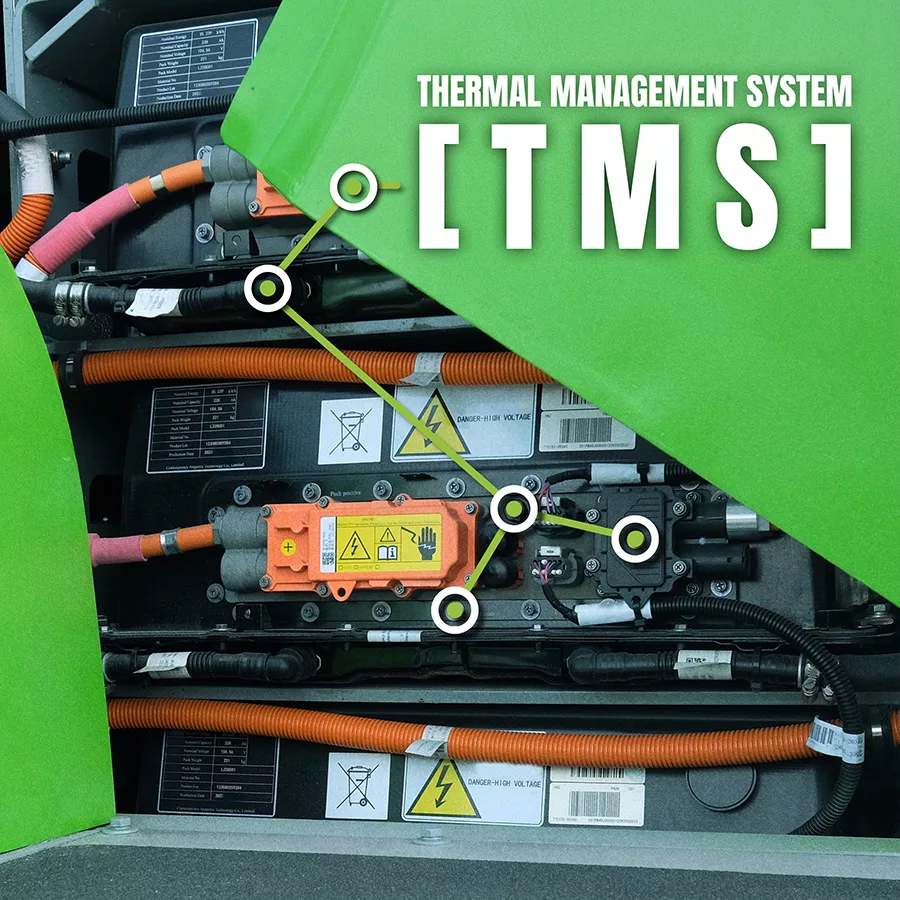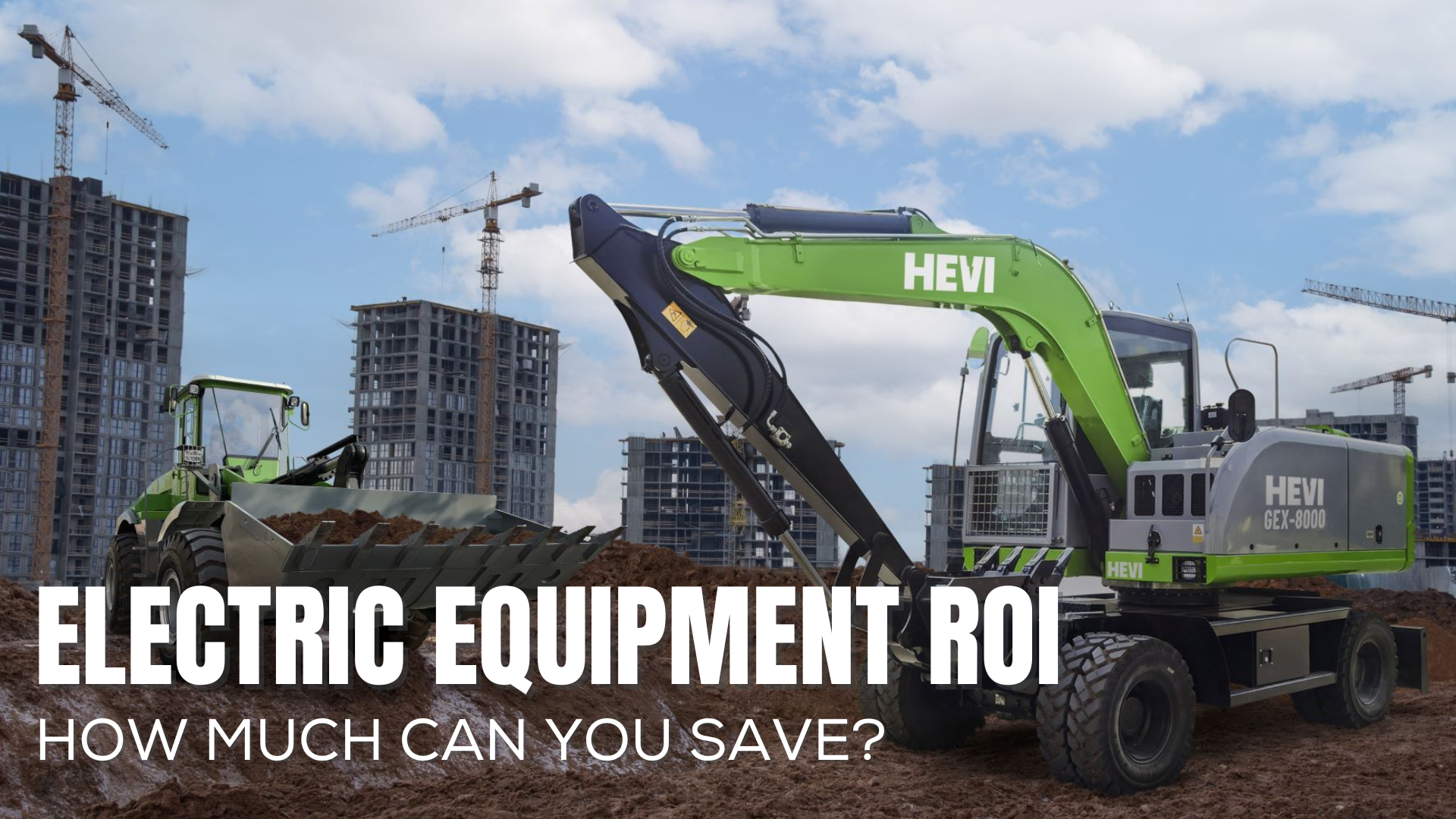Electric Heavy Equipment: How Thermal Management Protects Batteries and Operators
March 05 , 2024

“How safe is the battery?” It’s one of the most frequently asked questions.
Lithium-ion batteries in electric construction equipment generate heat during operation. Compounding this are ever-changing weather conditions. Without proper management, excessive temperatures can reduce battery life, decrease performance and create operational safety hazards.
HEVI electric equipment utilizes thermal management system (TMS) technology to safeguard your investment and ensure optimal battery performance in all working conditions.
Stanley Wang, director of product development at HEVI, defines TMS as an onboard intelligent tech designed to cool and heat the battery in electric heavy equipment. The system is particularly adept at adjusting to environmental and operational conditions, ensuring the battery operates within its ideal temperature range.
Wang says HEVI’s TMS monitors the battery's temperature by utilizing temperature sensors to ensure it works within a safe range. When the battery temperature approaches or reaches a certain temperature level, the TMS instantly takes steps to stabilize the temperature, such as activating a cooling or heating system.
How a TMS Reduces Overheating
The cooling aspect of the TMS includes an onboard water-cooling system complemented by large fans like those found in modern heavy equipment. This setup circulates coolant through channels adjacent to the battery cells. The coolant absorbs heat from the cells and transfers it to a heat exchanger, where it is dissipated to the outside environment.
“We essentially have these giant fans, uncommonly found in EV’s, on the back of the battery with tubes, which are for the coolant,” Wang says. “This system sends the coolant over the battery’s heated components, pull the heat from the components into the liquid, and then it sends the heat back to the fans to be distributed out.”
The TMS uses sophisticated algorithms to start the cooling process, adjusting temperatures based on real-time sensor data in the battery.
How a TMS Adapts to Cold Temperatures
The primary technology used by our TMS to warm the batteries in cold temperatures are Positive Temperature Coefficient (PTC) heaters. The PTC heaters are self-regulating heat elements well known for their ability to quickly heat up batteries, which is essential for cold starts.
“If you have a constant voltage, the PTC heater will automatically adjust for whatever the temperature is outside,” Wang says. “So, if it’s cold, it’ll have voltage flow freely through the unit to heat it up and ensure maximum power and efficiency.”
The technology allows electric-powered construction equipment to differ from other EVs, which tend to experience a drop in operating hours and performance in subzero temperatures. Unlike electric vehicles for passengers, which need to carefully balance battery size with weight, electric heavy machinery can decrease the counterweight and compensate with additional equipment. This flexibility enables HEVI to equip its machines with large, intelligent TMS and PTC units.
PTC heater units also help prevent overheating. While PTC allows for a greater voltage flow in colder conditions, its self-regulating nature restricts it in warmer elements to reduce heating and speed up cooling from the previously mentioned systems.
Additional Benefits of a TMS in Electric Construction Equipment
The cooling and heating techniques used by thermal management systems in electric construction equipment deliver several other key benefits, including:
- Expanded Equipment Life: The TMS protects the battery and its components from the rapid degradation caused by extreme thermal stress and temperature variations.
- Reliable Equipment Performance: The TMS ensures efficient energy storage and transfer while providing stable and reliable power across all operating conditions.
- Better Energy Efficiency: Batteries that operate within their ideal temperature range convert energy to power more efficiently, which lowers consumption and reduces operating costs.


